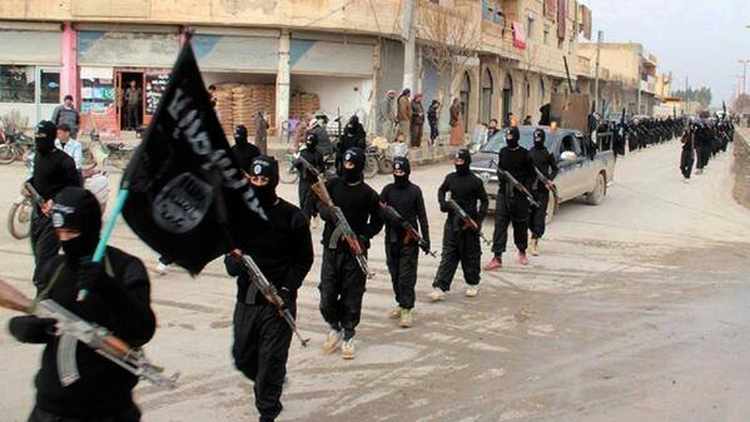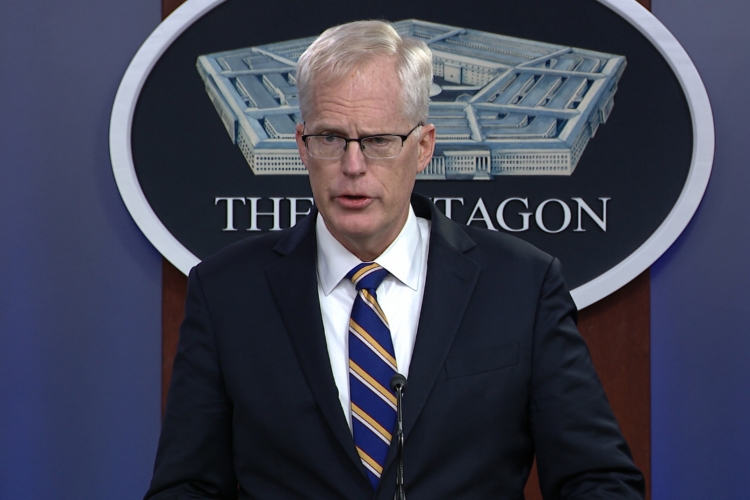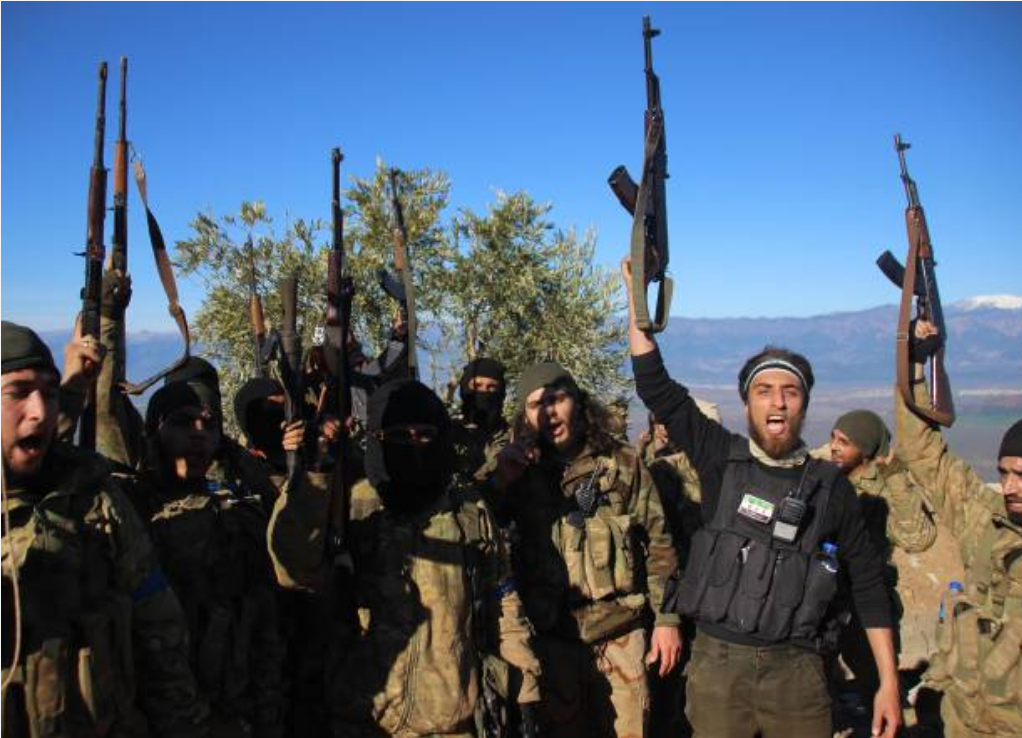Yesterday, (Thursday, April 21, 2021) we published the first of two parts of this story. Because of length, we split this into two parts. I encourage you to read Part I published y
Last year we published a story telling all that the REAL issues in Benghazi had little to do with Benghazi and certainly had NOTHING to do with an anti-Muslim video supposedly made in the U.S. that caused radicals to storm our consulate that night. The excuses we were given rang hollow then and “seemed” to be fabricated. Imagine the shock and awe when it came to light that the very people who were somewhat “implicated” as being complicit in the actions taken that night by our military were instigated by some of the same people who are in Joe Biden’s cabinet!
Enjoy!
We determined it was time to put the puzzle pieces in place and write a story about our findings. Little did we know, at the same time we were doing so, RealClearInvestigations had their staff working on the same story. They published their’s Wednesday morning.
I requested permission to publish their story because of its exhaustive links to their research findings. The story is longer than the normal one we publish, so we split it into two parts: Part I today with Part II to follow tomorrow.
Enjoy!
‘There Was No Moderate Middle’
Harvard 2014: Biden goes off-script, revealing the truth of U.S. support for jihadists in Syria.
Despite being privately aware of Nusra’s dominance, Obama administration officials continued to publicly insist that the U.S. was only supporting Syria’s “moderate opposition,” as then-Deputy National Security Adviser Antony Blinken described it in September 2014.
But speaking to a Harvard audience days later, then-Vice President Biden blurted out the concealed reality. In the Syrian insurgency, “there was no moderate middle,” Biden admitted. Instead, U.S. “allies” in Syria “poured hundreds of millions of dollars and thousands of tons of weapons into anyone who would fight against Assad.” Those weapons were supplied, Biden said, to “al-Nusra, and Al-Qaeda and the extremist elements of jihadis coming from other parts of the world.”
Biden quickly apologized for his comments, which appeared to fit the classic definition of the Kinsley gaffe: a politician inadvertently telling the truth. Biden’s only error was omitting his administration’s critical role in helping its allies arm the jihadis.
Rather than shut down a CIA program that was aiding the Al Qaeda-dominated insurgency, Obama expanded it. In April 2013, the president signed an order that amended the CIA’s covert war, codenamed Timber Sycamore, to allow direct U.S. arming and training. After tapping Saudi Arabia, Turkey, and Qatar to fund its arms pipeline for insurgents inside Syria, Obama’s order allowed the CIA to directly furnish U.S.-made weapons. Just as with the regime change campaign in Libya, a key architect of this operation was Hillary Clinton.
Obama’s upgraded proxy war in Syria proved to be “one of the costliest covert action programs in the history of the C.I.A.,” the New York Times reported in 2017. Documents leaked by NSA whistleblower Edward Snowden revealed a budget of nearly $1 billion per year or around $1 of every $15 in CIA spending. The CIA armed and trained nearly 10,000 insurgents, spending “roughly $100,000 per year for every anti-Assad rebel who has gone through the program,” U.S. officials told the Washington Post in 2015. Two years later, one U.S. official estimated that CIA-funded militias “may have killed or wounded 100,000 Syrian soldiers and their allies over the past four years.”
But these militias were not just killing pro-Syrian government forces. As the New York Times reported in April 2017, US-backed insurgents carried out “sectarian mass murder.”
One such act of mass murder came in August 2013, when the U.S.-backed Free Syrian Army joined an al-Nusra and ISIS offensive on Alawite areas of Latakia. A Human Rights Investigation found that the insurgents engaged in “the systematic killing of entire families,” slaughtering a documented 190 civilians, including 57 women, 18 children, and 14 elderly men. In a video from the field, former Syrian army general Salim Idriss, head of the U.S.-backed Supreme Military Council (SMC), bragged that “we are cooperating to a great extent in this operation.”
The Latakia massacres came four months after the U.S. ambassador to Syria, Robert Ford, hailed Idriss and his fighters as “the moderate and responsible elements of the armed opposition.” The role of Idriss’s forces in the slaughter did not cancel the administration’s endorsement. In October, the Washington Post revealed that the “CIA is expanding a clandestine effort … aimed at shoring up the fighting power of units aligned with the Supreme Military Council, an umbrella organization led by [Idriss] that is the main recipient of U.S. support.”
[After this article was published, RCI received Ford’s email response to our request for comment. Ford wrote that there was “no question” that the U.S.-backed Free Syrian Army engaged in war crimes but noted, “We denounced [them] publicly at the time and in private.” Ford said the administration’s official stance that moderates were engaged in the fight was accurate in light of the facts on the ground. “Our definition of moderates in the armed opposition,” he wrote, “were people willing to negotiate a peaceful end to the war.”]
Officially, the upgraded CIA program barred direct support to al-Nusra or its allies in Syria. But once U.S. weapons arrived in Syria, the Obama administration recognized that it had no way of controlling their use – an apparent motive for waging the program covertly. “We needed plausible deniability in case the arms got into the hands of al-Nusra,” a former senior administration official told the New York Times in 2013.
One area where U.S. arms got into al-Nusra’s hands was the northwestern Syrian province of Idlib. Al Qaeda leaders would ultimately control and – though the group disputes it – provide ISIS leaders sanctuary there.
‘Al-Qaeda’s Largest Safe Haven Since 9/11’
In May 2015, an array of insurgent groups, dubbed the Jaish al-Fatah (“Army of Conquest”) coalition, captured Idlib province from the Syrian government. The fight was led by al-Nusra, and showcased what Charles Lister, the D.C.-based analyst with contacts to insurgents in Syria, dubbed “a far improved level of coordination” between rival militants, including the U.S.-backed FSA and multiple “jihadist factions.”
For Lister, the conquest of Idlib also revealed that the U.S. and its allies “changed their tune regarding coordination with Islamists.” Citing multiple battlefield commanders, Lister reported that “the U.S.-led operations room in southern Turkey,” which coordinated support to U.S.-backed insurgent groups, “was instrumental in facilitating their involvement in the operation” led by al-Nusra. While the insurgents’ U.S.-led command had previously opposed “any direct coordination” with jihadist groups, the Idlib offensive “demonstrated something different,” Lister concluded: To capture the province, U.S. officials “specifically encouraged a closer cooperation with Islamists commanding frontline operations.”
The U.S.-approved battlefield cooperation in Idlib allowed al-Nusra fighters to directly benefit from U.S. weapons. Despite occasional flare-ups between them, al-Nusra was able to use U.S.-backed insurgent groups “as force multipliers,” the Institute for the Study of War, a prominent D.C. think tank, observed when the battle began. Insurgent military gains, Foreign Policy reported in April 2015, were achieved “thanks in large part to suicide bombers and American anti-tank TOW missiles.”
The jihadist-led victory in Idlib quickly subjected its residents to sectarian terror. In June 2015, al-Nusra fighters massacred at least 20 members of the Druze faith. Hundreds of villagers spared in the attack were forced to convert to Sunni Islam. Facing the same threats, nearly all of Idlib’s remaining 1,200 Christians fled the province, leaving a Christian population that reportedly totals just three people today.
In a 2017 post-mortem on the Obama administration’s covert war in Syria, the New York Times described the insurgents’ conquest of Idlib as among the CIA program’s “periods of success.” This was certainly the case for Al Qaeda.
“Idlib Province,” Brett McGurk, the anti-ISIS envoy under Obama and Trump, and now Biden’s top White House official for the Middle East, said in 2017, “is the largest Al Qaeda safe haven since 9/11.”
U.S. Allows ISIS Takeover

Before Al Qaeda captured Idlib, the first ISIS stronghold in Syria, Raqqa, grew out of a similar alliance between U.S.-backed “moderate rebels” and jihadis. After this coalition seized the city from the Syrian government in March 2013, ISIS took full control in November.
When ISIS declared its caliphate in parts of Syria and Iraq in June 2014, the U.S. launched an air campaign against the group’s strongholds. But the Obama administration’s anti-ISIS offensive contained a significant exception. In key areas where ISIS’s advance could threaten the Assad regime, the U.S. watched it happen.
In April 2015, just as al-Nusra was conquering Idlib, ISIS seized major parts of the Yarmouk refugee camp on the outskirts of Damascus, marking what the New York Times called the group’s “greatest inroads yet” into the Syrian capital.
In the ancient city of Palmyra, the U.S. allowed an outright ISIS takeover. “[A]s Islamic State closed in on Palmyra, the U.S.-led aerial coalition that has been pummeling Islamic State in Syria for the past 18 months took no action to prevent the extremists’ advance toward the historic town – which, until then, had remained in the hands of the sorely overstretched Syrian security forces,” the Los Angeles Times reported in March 2016.
In a leaked conversation with Syrian opposition activists months later, then-Secretary of State John Kerry explained the U.S. rationale for letting ISIS advance.
“Daesh [ISIS] was threatening the possibility of going to Damascus and so forth,” Kerry explained. “And we know that this was growing. We were watching. We saw that Daesh was growing in strength, and we thought Assad was threatened. We thought, however, we could probably manage, that Assad would then negotiate” his way out of power.
In short, the U.S. was leveraging ISIS’s growth to impose regime change on Syrian President Bashar al-Assad.
The U.S. strategy of “watching” ISIS’s advance in Syria, Kerry also admitted, directly caused Russia’s 2015 entry into the conflict. The threat of an ISIS takeover, Kerry said, is “why Russia went in. Because they didn’t want a Daesh government.”
Russia’s military intervention in Syria prevented the ISIS government in Damascus that Kerry and fellow Obama administration principals had been willing to risk. Pulverizing Russian airstrikes also dealt a fatal blow to the Al Qaeda-dominated insurgency that the Obama team had spent billions of dollars to support.
From U.S. Enemy to ‘Asset’ in Syria
With U.S.-backed fighters vanquished and one of their main champions, Hillary Clinton, defeated in the November 2016 election, the CIA operation in Syria met what the New York Times called a “sudden death.” After criticizing the proxy war in Syria on the campaign trail, President Trump shut down the Timber Sycamore program for good in July 2017.
“It turns out it’s – a lot of al-Qaeda we’re giving these weapons to,” Trump told the Wall Street Journal that month.
With the exit of the Obama-Biden team, the U.S. was no longer fighting on Al Qaeda’s side. But that did not mean that the U.S. was prepared to confront the enemy that it had helped install in Idlib.
While Trump put an end to the CIA proxy war, his efforts to further extricate the U.S. from Syria by withdrawing troops were thwarted by senior officials who shared the preceding administration’s regime change goals.

“When President Trump said ‘I want everybody out of Syria,’ the top brass at Pentagon and State had aneurysms,” Christopher Miller, the Acting Secretary of Defense during Trump’s last months in office, recalls.
Jim Jeffrey, Trump’s envoy for Syria, admitted to deceiving the president in order to keep in place “a lot more than” the 200 U.S. troops that Trump had reluctantly agreed to. “We were always playing shell games to not make clear to our leadership how many troops we had there,” Jeffrey told Defense One. Those “shell games” have put U.S. soldiers in harm’s way, including four servicemembers recently wounded in a rocket attack on their base in northeastern Syria.
While thwarting a full U.S. troop withdrawal, Jeffrey and other senior officials have also preserved the U.S. government’s tacit alliance with Idlib’s Al-Qaeda rulers. Officially, al-Nusra remains on the U.S. terrorism list. Despite several name changes, the State Department has dismissed its rebranding efforts as a “vehicle to advance its position in the Syrian uprising and to further its own goals as an al-Qa’ida affiliate.”
But in practice, as Jeffrey explained last year, the U.S. has treated Al-Nusra as “an asset” to U.S. strategy in Syria. “They are the least bad option of the various options on Idlib, and Idlib is one of the most important places in Syria, which is one of the most important places right now in the Middle East,” he said. Jeffrey also revealed that he had communicated with al-Nusra leader Mohammed al-Jolani via “indirect channels.”
Since retaking office under Biden, the Obama veterans who targeted Syria with one of the most expensive covert wars in history have deprioritized the war-torn nation. While pledging to maintain crippling sanctions and keep U.S. troops at multiple bases, as well as announcing sporadic airstrikes, the White House has otherwise said little publicly about its Syria policy. The U.S. military raid that ended ISIS leader al-Qurayshi’s life in February prompted the only Syria-focused speech of Biden’s presidency.
While Biden trumpeted the lethal operation, the fact that it occurred in Idlib underscores a contradiction that his administration has yet to address. By taking out an ISIS leader in Al Qaeda’s Syria stronghold, the president and his top officials are now confronting threats from a terror safe haven that they helped create.
Editor’s Note: Our thanks to RealClearInvestigations for allowing us to share this deeply investigated treasure-trove of information.
Sometimes things presented as fact are NOT factual at all. Americans were forced to swallow the yarns spun by Hillary Clinton and those in the Obama Administration who covered for each other. Hmmm…that seems to happen often today in D.C., doesn’t it.
As always, thank you for being with us at TruthNewsNetwork. We love working together to find and present factual information which circumvents whatever is “politically correct.”
Dan Newman

